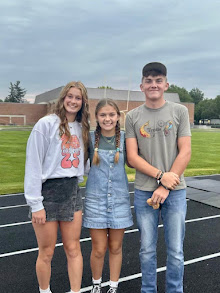So this is webdings? Funny, it doesn't look anything like what I picture a webding being. No matter. Just a chance of scenery in fontland.
On the other hand, a purple poppy mallow is a perfectly descriptive name, appearance-wise if not accurate taxonomically. Yes, the flower could be called purple; not the dull dark mournful violet, but rather in-your-face, I will never blend in, magenta. It is silky, evanescent and fragile like a California poppy. And the leaves are fingered as if it were a mallow relative.
But appearances are famously and tediously deceiving. A purple poppy mallow has roots the circumference of your wrist, carrot shaped and reaching down to grab the subsoil or bedrock, whatever comes first. It has long ropy fibrous stems growing as far as 4 feet from the parent plant. It spreads by seed; it spreads by root. It is tenacious, flat, impossible to pull, hardy through all extremes; it is a native of the Great Plains.
I first saw the purple poppy mallow blooming merrily on a limy outcroppin way out in western Nebraska on a road cut. Its not a color invited into the polite company of a cultivated coordinated flower bed. I don't know what evolutionary signal a blazing magenta is sending on a grey slope with grey grass, grey dust and other grey companions. But that native appearance is the one time I saw it...attempts to order the plant, seed, or find it in the local garden centers went for naught. Finally a friend at Earl May went out of his way to get me some....I think it was two plants, but it might have been more. I pried them loose of the confining plastic pack, took heed of the growing conditions I'd observed, and parked them in an ugly baking southwest corner of the garden. Then, in a stunning psychological move, I pretended not to care if they lived or died.
It worked. The purple poppy mallow duked it out with the ground ivy and won. It crawled over the landscape timber and overflowed into the yard. When I sprinkled an occasional seed head over the daylily bed, a few adventurous seedlings rewarded me. Some carrot shaped children wandered over to the compost pile.
Then we moved. I got the longest spade I owned and dug up as big a chunk of mallow as I could. It wasn't easy; it was the end of a drought year and the soil wouldn't separate from the plants. But that giant carrot of a root was firm and white and soon I had chunks of creeping mallow in three different flower beds. It begins to bloom in June; I can see a spreading fountain of that unmistakable indescribable hue way far away in the back border. Underneath the foliage I know there is a clump of brome, possibly some renegade clover, but I know the mallow will clamber over the top and I can pretend that part of the bed is tidy. Even the mower thinks twice about severing an arm of a purple poppy mallow.
Many years ago we took a load of plants on a midnight run to Wichita. It was a long dark quixotic trip down the Kansas Turnpike. We cruised through the dark silhouettes of the surrounding hills, not a security light nor a farmstead for perspective; no exit ramps or commerce, just cattle crossings and pens. I felt we were on a road to some 19th century past and would face the sunrise without a barbed wire in sight. The magic of the Flint Hills works even in the dark. I read all about Chase county in William Least Heat Moon's book Prairy Erth. On other travels west, we made sure our routes took us through Cottonwood Falls, to visit the historic ranch and its limestone outbuildings and picnic with the bluegrass whispering nearby. The idea of all that grass basking in the sun, bathed with 3o some inches of rain, made me long for a patch of bluestem myself. So I bought a mix of prairie grass seed for the newly made terrace behind the greenhouses. Side oats grama, big bluestem, a little Indiangrass and some ratibida (Mexican hats) for accent. I hand sowed the seed and was rewarded with the perfect conditions for germination and growth; like any proud mama, I checked on the turf's progress often.
That grass still carpets our terrace; however, my husband did not share my vision of Flint Hills' grasses of two to four feet and my prairie grasses are as neatly cropped as any Hereford would keep them.
Not all my prairie plants mingle, mix and flourish. The roadsides of central Missouri are bright with Indian paintbrush and butterfly weed during the summer, adding swatches of orange to the background of black eyed susies. Despite repeated attempts, my butterfly weeds came up weak kneed and puny, succumbing most winters despite their reputed hardiness. What's the problem? I can only assume they need gravel and clay, not because they prefer poor soil, but because the poor soil cuts down on the competition. Sigh, guess I'll have to visit those wildflowers during the summer. However, traveling just a little ways west, you can see liatris poking up in road borders and pastureland. I lost liatris after liatris out at the farm, but for some reason, the front bed here in town seems like home to them. The white ones have largely disappeared, but their purple progeny bring to mind the roadcuts of the grasslands. The converse of the soil conundrum is the proliferation of echinacea. Neither my mother's garden in central Missouri, nor my sister's in the brickyard of St. Louis soil can support a happy coneflower. But the old pasture behind my house that masquerades as a lawn probably supports more coneflowers than blades of grass. In my case, they probably are getting a little carried away and I'll try to rein them in this summer. But even if too many have come to the party, its difficult to turn away such an easy to please guest, one that makes few demands on one's attention, that looks pretty well into the hottest part of the summer. And brings happiness to the finches as well.
Finally, I look forward to my little patches of buffalo grass. Our friends in Oklahoma pasture their cattle on shortgrass prairie. It would be such a major and time consuming undertaking to switch my cool season grass to its warm blooded blue compatriot. But the patches are making progress down by the street and are another reminder of Plains vegetation out towards the 100th meridian.
Don't get me wrong. I want to have a garden all summer. I'm glad we have humidity, gully washers, and an annual rainfall over fourteen inches. But I can visualize cattle grazing in the heat and haze of the Sandhills; I can hear the cottonwoods in the ditches of the Flint Hills; I am gladdened by compass plants, leadwort, and other prairie denizens even while living in the shadow of ten foot tall corn.
Subscribe to:
Post Comments (Atom)















No comments:
Post a Comment